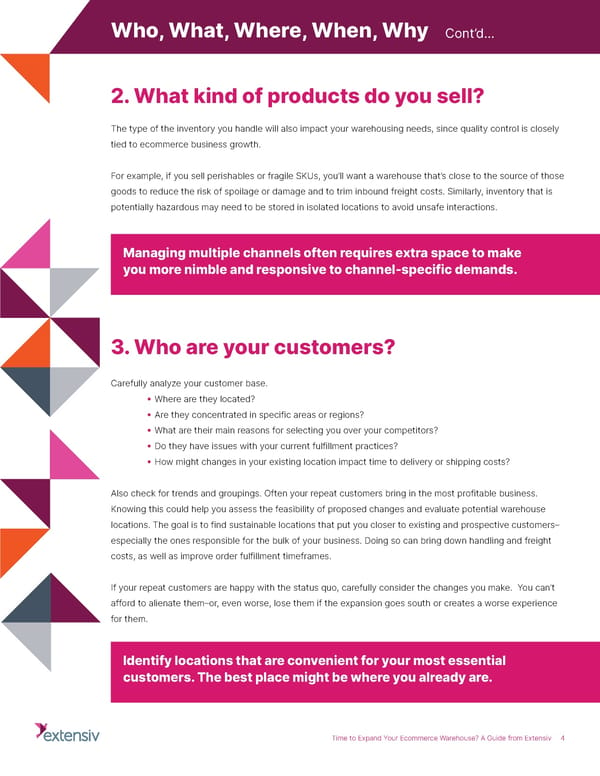Who, What, Where, When, Why Cont’d... 2.What kind of products do you sell? The type of the inventory you handle will also impact your warehousing needs, since quality control is closely tied to ecommerce business growth. For example, if you sell perishables or fragile SKUs, you’ll want a warehouse that’s close to the source of those goods to reduce the risk of spoilage or damage and to trim inbound freight costs. Similarly, inventory that is potentially hazardous may need to be stored in isolated locations to avoid unsafe interactions. Managing multiple channels often requires extra space to make you more nimble and responsive to channel-specific demands. 3.Who are your customers? Carefully analyze your customer base. •Where are they located? •Are they concentrated in specific areas or regions? •What are their main reasons for selecting you over your competitors? •Do they have issues with your current fulfillment practices? •How might changes in your existing location impact time to delivery or shipping costs? Also check for trends and groupings. Often your repeat customers bring in the most profitable business. Knowing this could help you assess the feasibility of proposed changes and evaluate potential warehouse locations. The goal is to find sustainable locations that put you closer to existing and prospective customers– especially the ones responsible for the bulk of your business. Doing so can bring down handling and freight costs, as well as improve order fulfillment timeframes. If your repeat customers are happy with the status quo, carefully consider the changes you make. You can’t afford to alienate them–or, even worse, lose them if the expansion goes south or creates a worse experience for them. Identify locations that are convenient for your most essential customers. The best place might be where you already are. Time to Expand Your Ecommerce Warehouse? A Guide from Extensiv 4
 Warehouse Expansion Guide Page 4 Page 6
Warehouse Expansion Guide Page 4 Page 6